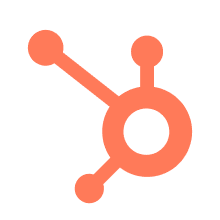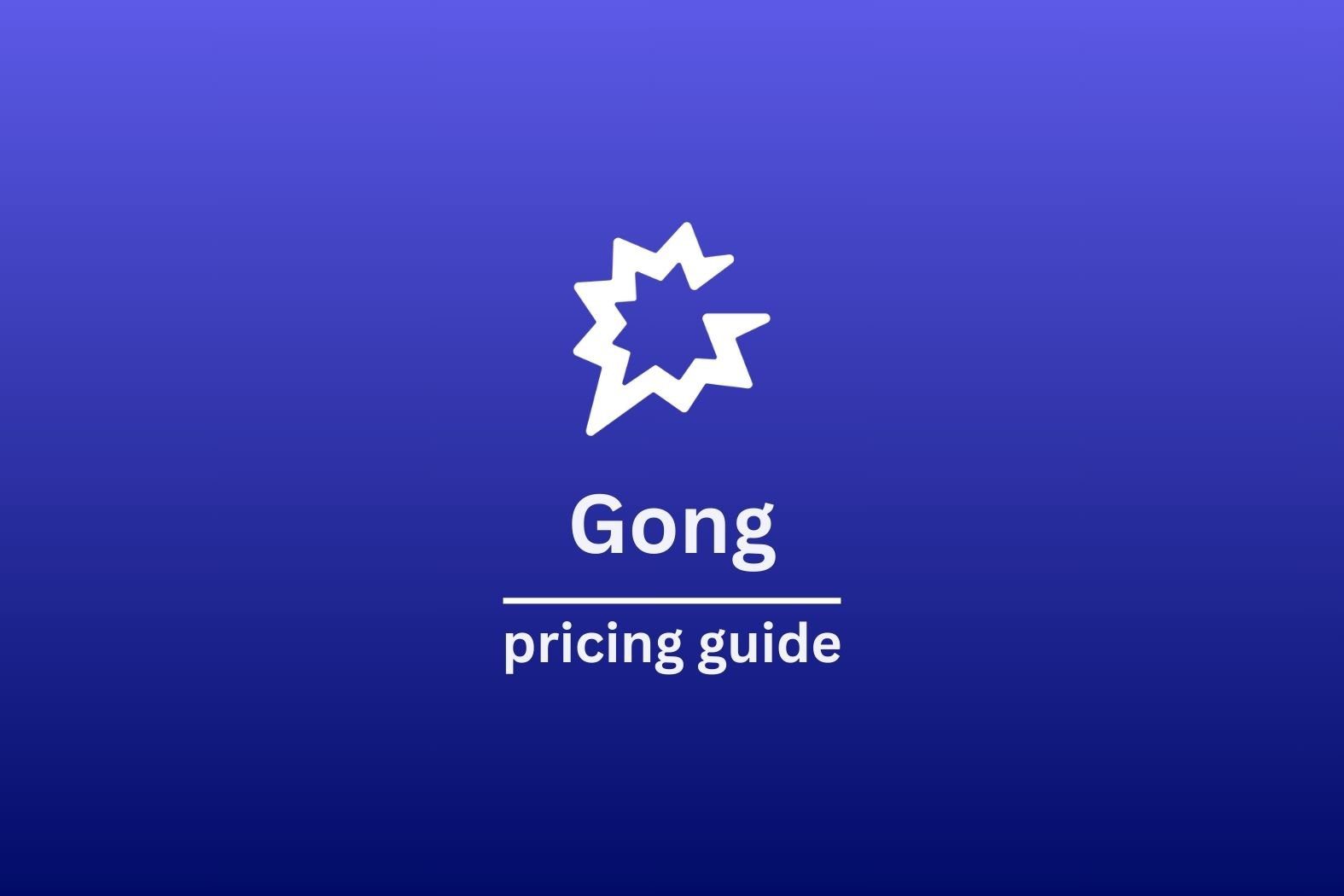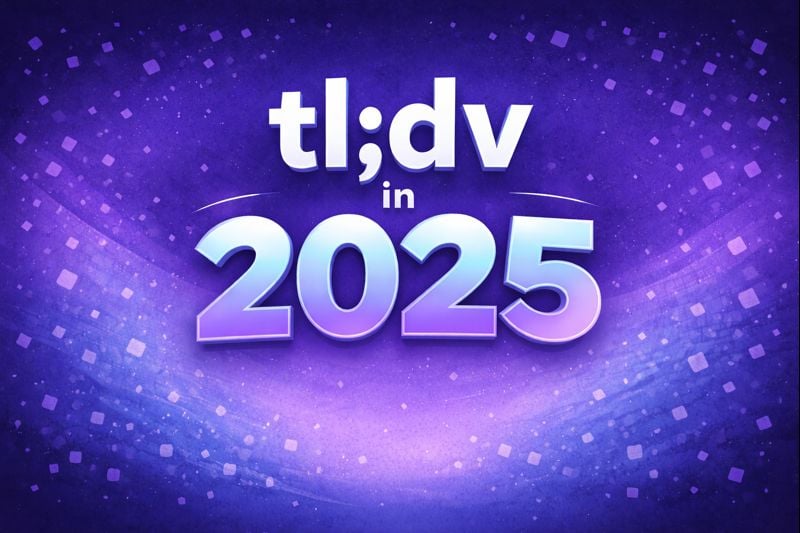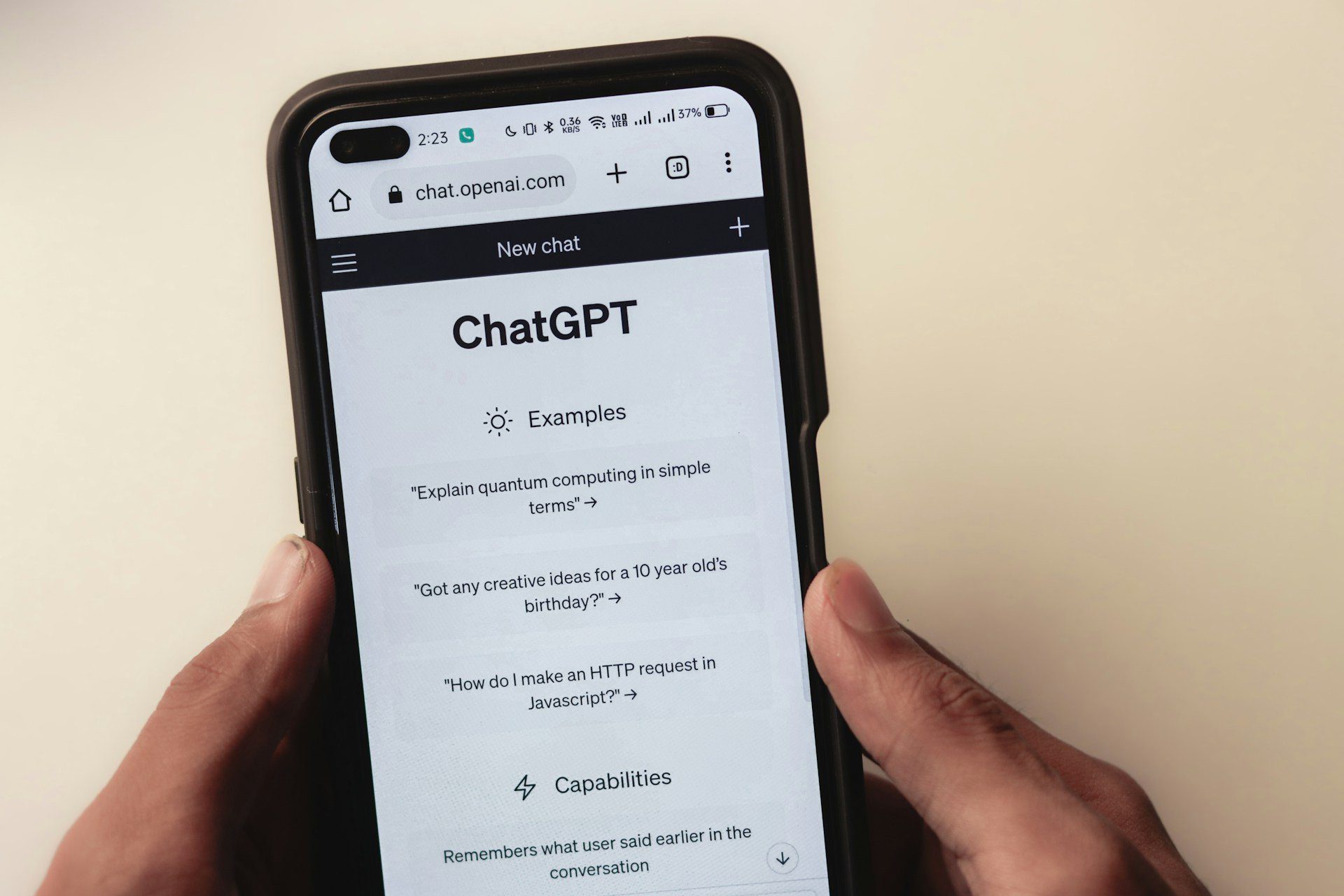It’s a truth universally acknowledged, that a sales leader in possession of a budget, must be in want of Gong… though not always of Gong’s pricing.
If you work in sales, you’ve likely heard of Gong.io. The real question is whether you’ve heard praise about the platform or a mix of shock and disgust at the price. The truth is, sales teams today get to record, analyze, and scrutinize every single interaction with clients. Gong has made a name for itself doing this well, but it’s also become notorious for its elusive (but supposedly sky-high) pricing and pushy sales tactics.
Gong prides itself on being able to transform sales conversations, emails, and all interactions into easy to use insights that drive revenue. With AI-powered tools that can dissect every word of a sales call, Gong promises to level up the way teams approach their sales strategies.
But there’s a hitch. Despite its prowess in the sales intelligence world, Gong’s pricing details appear to be a well-guarded secret. For businesses trying to figure out if Gong fits within their budget, the lack of transparency can be frustrating. Instead of clear-cut numbers, potential customers are left guessing until they engage with Gong’s sales team.
This article aims to clear the fog around Gong’s pricing structure. We’ll break down how Gong charges for its services and offer estimates to help you gauge the potential cost for your business. We’ll also introduce tl;dv, a compelling Gong alternative that offers similar features without the steep price tag, giving you the tools you need to make an informed decision.
TL;DR: How Much Does Gong Really Cost in 2025?
Gong’s pricing is anything but transparent. However, after scouring different review sites, including Reddit and Vendr, I’ve been able to find ballpark figures. Also, bear in mind that all of Gong’s plans are annual. You cannot pay monthly with Gong, and most of the time you’re forced into multi-year contracts.
There are four key things to consider:
- Number of users
- Platform fee
- Onboarding service
- Your specific bundle
In short, the more users you sign up, the better price per user you can usually get. The standard price is thought to be $1,600 per user per year. However, keep in mind that all negotiations are handled by Gong’s sales team, so you’ll have to haggle (they’re experts after all).
Then there’s the platform fee. This is usually a minimum of $5,000 per year, rising to $50,000+ depending on how big your organization is. This takes into account data storage, integrations, and general platform access.
Next, you’ve got the one-time mandatory onboarding service. This is estimated to cost between $7,500 to $30,000+, again depending on how big your team is (and how well you negotiate).
Finally, Gong’s price can be dramatically higher if you also opt for the Engage Bundle, for example. In most cases, this bundle is thought to double the per user cost. This can also lead to higher platform fees and onboarding services too.
Still considering forking out the big bucks for Gong? Try our Gong Calculator to work out how much it’s likely to cost you (and how much you’d save by choosing tl;dv instead).
Gong Pricing Calculator
Estimate your first-year cost based on team size and typical fee structures. Adjust any assumptions below.
Inputs
Some buyers report Engage requires Core seats, effectively doubling per-user licensing. Toggle to model that scenario.
Estimate
Disclaimer: This calculator provides an estimate for informational purposes only. Actual pricing varies by package, term, and negotiation.
Switch to tl;dv and Save
Disclaimer: This calculator is designed to give you an estimated cost for reference only. Actual pricing will depend on your unique setup, business needs, and contract negotiations. Keep in mind that platform and service fees may vary and are often flexible.
Gong Pricing: How It Works
Gong’s pricing isn’t as straightforward as you might’ve hoped. Unfortunately, many a sales team have wasted countless hours searching for Gong’s pricing structure. Some teams even reach out to Gong, as instructed on their website, only to be rejected before they even hear the price.
It’s like a whisper in the wind, but here’s what we know. Gong’s pricing is determined by four major factors:
- Per-User Licensing Fees
- Gong’s Platform Fee
- Obligatory Professional Services
- Your Specific Bundle
Let’s take a look at each of these four components of Gong’s pricing structure.
1. Per-User Licensing Fees
Gong’s pricing starts with a per-recorded-user licensing model. This means that you’ll pay for each user who needs access to the platform’s call recording and transcription features. However, it’s not just a simple flat rate.
Gong offers different tiers or “seat editions” of licenses, each with varying levels of functionality. For example, a basic seat might include core features like call recording and transcription, while a more advanced seat could offer additional analytics tools and AI-driven insights.
This tiered approach allows businesses to choose the level of service that best matches their needs. A small team might only require basic seats, while a larger organization with more complex needs might opt for the advanced seats. The cost per seat can range from $1,000-$3,000 annually, depending on the level of service required.
For standard seats, Gong usually offers a discount the more you buy. However, this discount is also down to how well you negotiate. As far as I can tell, there isn’t a set pricing scheme. It’s all up to how much you can get it down on the day.
Here’s a standard table, revealing the general idea for discounts in a per-user licensing fee only.

2. Gong’s Platform Fee
In addition to the per-user licensing costs, Gong charges an annual platform fee. This fee covers the underlying infrastructure of the platform, including data storage, integrations with other software tools (like your CRM), and ongoing updates to the system. The platform fee is typically based on the size of your business and the volume of data you’ll be storing and processing through Gong.
For smaller businesses, this fee might be relatively modest, but it can increase significantly for larger organizations with more extensive data needs. For example, the bare minimum that even a small business must pay is $5,000 per year for the platform fee, while a large enterprise could see this cost rise to $50,000 or more.
The platform fee is an essential part of Gong’s pricing structure, as it ensures that the system can scale to meet the needs of businesses of all sizes. Where other AI meeting assistants and sales tools bundle this platform fee in with their transparent pricing structure, Gong likes to be awkward.
3. Obligatory Professional Services
Gong also offers a range of add-ons, many of which become mandatory under certain circumstances. These add-ons are there to enhance your experience with the platform, but they also add weight to the price.
Most teams are required to pay for onboarding services, which can scale from $7,500 to over $30,000 depending on the number of users and the additional bundles or features you’ve signed up for.
This price accounts for both mandatory and optional add-ons, such as:
- Training your admins
- Custom integrations (CRMs, etc.)
- Implementation support
- Ongoing support
- Hands-on configuration
- Data migration
While these add-ons can significantly enhance the value of the platform, they also add to the overall cost. It’s important for businesses to carefully consider which features and services are truly necessary for their operations, as opting for too many add-ons can quickly drive up the price.
However, for those businesses that need the extra capabilities, these add-ons can provide a significant boost to their sales and revenue intelligence efforts.
4. Your Specific Bundle
Briefly touched upon in the per-user licensing fees section, each seat can be a different price, depending on which features are required.
This is another reason why Gong’s pricing is kept under wraps. They target enterprises and they are flexible with their plans.
However, it’s known that if you opt to go for Gong’s Engage bundle, it often requires core seats, effectively doubling the per-user licensing.
So, How Much Does Gong Actually Cost?
After all this talk of Gong’s pricing components, you probably just want a straightforward answer. Unfortunately, Gong isn’t so sympathetic. It doesn’t care if you want a straight answer. That’s why it buried its pricing in the first place.
If you asked a salesperson how much Gong was, they’d give you a bog-standard response: “how long is a piece of string?” The truth is, it depends on all those four components, the size of your team, and the amount of features and additional services you require.
However, after searching online and combining multiple credible sources, I can confirm that the price is… A LOT. Here’s a quick breakdown to compare Gong’s pricing with tl;dv’s.

This simple graph shows the estimated price of Gong compared to the definite price of tl;dv, an alternative to Gong for state-of-the-art sales intelligence. As you can see, with 100 employees, Gong will be billing you around $200,000 up front, locking you into a multi-year contract (this graph only takes into consideration the minimum platform and onboarding service fees). For the same sized team, tl;dv will charge you just $42,000, marking a saving of over $150,000!
Example Cost Scenarios
To give you a better idea of how these costs can add up, let’s look at a few hypothetical scenarios:
- Small Business (10 Users): With a platform fee of $5,000 and each seat costing $1,600, the total annual cost could be around $21,000. That’s before you’ve added any mandatory onboarding services too. This figure could easily rise to $28,000+ per year if you needed a custom integration and some team training.
- Medium Business (50 Users): With a platform fee of $20,000, a discounted seat cost of $1,520, and an onboarding service fee of $10,000, the total annual cost could be $106,000 per year. This setup would provide the additional analytics and insights needed to support a larger team and more complex sales operations.
- Large Business (250 Users): With a platform fee of $50,000, generous seat discounts bringing the cost to $1,200 per user, and an enterprise-scale onboarding fee of $25,000, you’re looking at a whopping annual cost of just over $375,000. For a large enterprise, this investment would provide comprehensive sales intelligence capabilities across the entire organization, helping to drive revenue growth on a massive scale.
Why Is Gong’s Pricing Not Public?
One of the biggest hurdles when evaluating Gong is figuring out what it will actually cost. Unlike many SaaS tools with clear pricing pages, Gong doesn’t publish its rates upfront. Instead, costs are customized based on factors like team size, required features, and the scope of the rollout, meaning two businesses might pay very different amounts for the same platform.
This approach isn’t only about tailoring value. It also gives Gong more control over the sales process. By requiring a call with their reps, the company sets the stage for upsells, budget-based adjustments, and price justification tied to the value they promise to deliver. The lack of upfront pricing can still be seen as a tactic to avoid scaring off potential buyers with sticker shock.
For some buyers, this can be a plus. Strong negotiators may unlock discounts, custom bundles, or extra services. But for those who prefer transparency, it can feel frustrating not to know upfront whether Gong fits the budget. Either way, anyone considering Gong should expect a pricing discussion and be prepared to negotiate.
What Do Real Gong Users Say About Its Pricing?
Over on Reddit, there’s a thread about how much Gong costs. Several of the commenters mentioned the annual base price (platform fee) of $5k, plus the per user cost, with different commenters specifying different figures ranging from $1,200 to $1,400 per user. However, it’s worth mentioning that this thread is from 2020 and prices have most likely increased since then.

In a separate thread about a user switching to Gong (with the Engage bundle), one user sarcastically replies: “They should rename it Gong Enrage because that’s how you’re going to feel in a week…”

In the same thread, another user commented that Gong Engage is a pipe dream as of late 2024. In a different thread about Gong Engage, several commenters agree that Gong Engage is not as good as its competitors: Outreach and Salesloft.
This is fairly worrying when you consider that it’s widely reported that Gong Engage often raises the per user fee to double the already high cost.
In fact, the more I look on genuine people-first sites like X and Reddit, the more I see people saying the same thing: Gong carries a premium price tag without offering enough to truly set it apart from more affordable alternatives.
According to anonymized customer deal notes shared by Vendr, some Gong customers were initially quoted a 6% renewal uplift, though buyers were often able to negotiate this down. Additionally, multiple users report increasing their licenses (sometimes by double) only to have Gong lower their discount. Other verified buyers suggest they were forced to either upgrade or downgrade at the end of their contract, forcing them to either pay more for services they didn’t need or lose the services they did need.
One good thing that the Vendr community put forward is that the platform fee, often costing $5k-$10k annually, can sometimes be waived upon renewal if strongly contested.
What Do You Get For Your Money?
Gong.io has built its reputation as a premium tool for sales teams aiming to sharpen performance and drive revenue. It started as a conversation intelligence platform with AI-powered call recording and transcription, giving teams a way to review and analyze their sales interactions in detail.
Over time, Gong expanded into a full revenue intelligence platform. Today, it promises deeper analytics, AI-driven insights, and the ability to link everyday conversations directly to revenue outcomes. In practice, that means sales managers can track performance metrics, spot winning strategies, and even forecast future results, tools designed to justify the premium price tag.
For businesses weighing the cost, this is the crux of what you get: visibility into every customer interaction and the ability to turn that raw data into actionable intelligence. Sales reps get targeted coaching, leaders get a pipeline-wide view, and the company gets more informed decisions. On paper, it’s the kind of “magic wand” that helps close more deals, though whether it’s worth the investment depends on how much you value that level of insight.
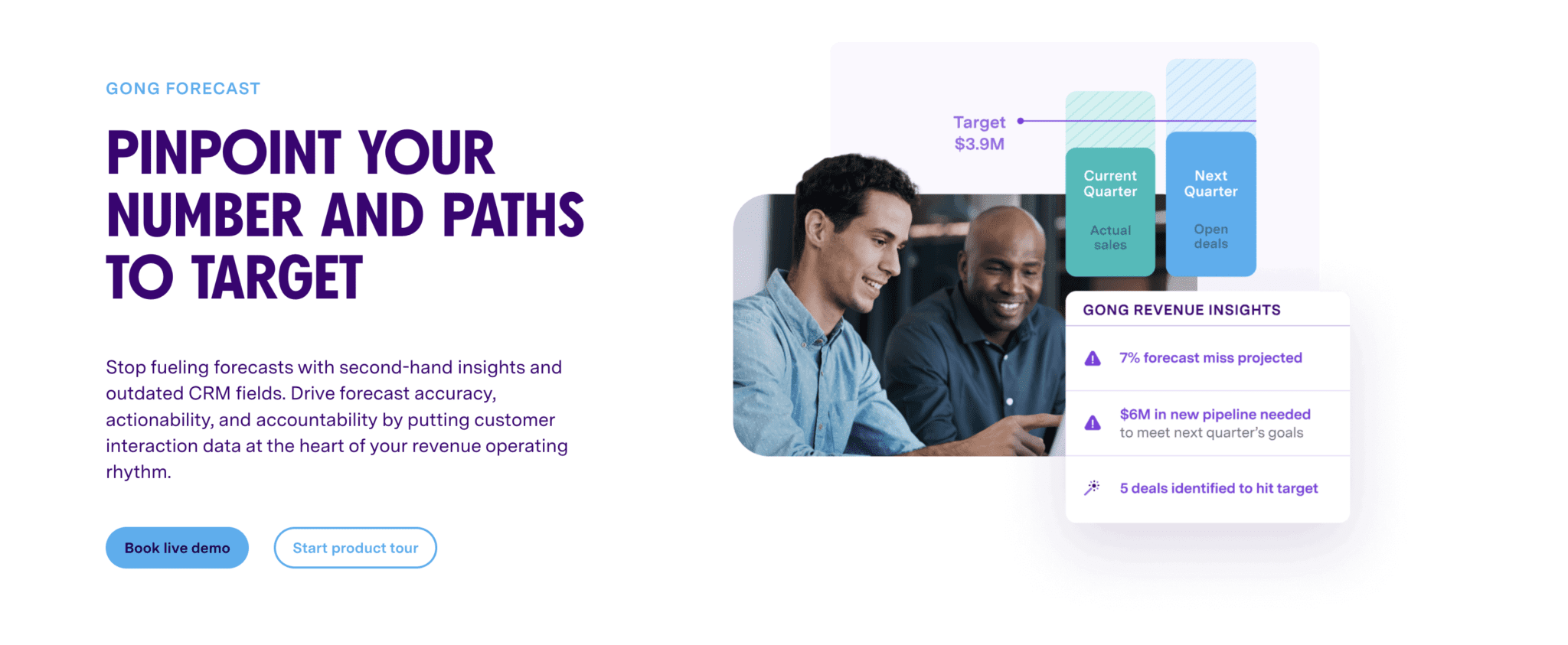
Key Features: Is Gong Actually Worth the Price Tag?
Gong has several key features that many customers claim makes it worth the money. Whether or not these features justify Gong’s pricing is completely up to you. Here are some of the best features of Gong:
- Call Recording and Transcription
- AI-Driven Analysis and Coaching
- Pipeline and Forecast Intelligence
Call Recording and Transcription
Once a cornerstone feature of Gong.io, call recording and transcription are now table stakes in 2025. Nearly every sales enablement or meeting intelligence tool on the market offers automatic recording and multi-language transcription, often powered by large language models that can rival—or even surpass—Gong’s proprietary system. tl;dv, for instance, provides this for free!
That doesn’t mean the feature is worthless. Gong still gives sales teams the ability to convert spoken conversations into searchable text, making it easier to surface key details, spot recurring objections, or analyze how reps are handling tough moments on calls. This data can feed back into sales training, script optimization, and strategy development.
But in today’s market, the real differentiator isn’t whether you can record and transcribe, it’s what you do with that data afterwards. And here, Gong’s advantage has narrowed, as competitors now provide equally strong transcription with more flexible pricing.
AI-Driven Analysis and Coaching
Gong takes the data from these transcriptions and goes a step further with AI-driven analysis. Once the transcript is ready, Gong interprets the conversation, providing insights that can help improve future interactions.
For example, Gong’s AI can analyze the talk-to-listen ratio, detect topics discussed during the call, and assess customer engagement throughout the conversation. This allows sales reps to understand not just the content of their calls, but the dynamics at play:
- Are they talking too much?
- Are they addressing the customer’s needs effectively?
- Are there any red flags that need to be addressed in the next follow-up?
The AI-driven insights also extend to larger patterns across multiple calls. Gong can identify trends in customer sentiment, highlight common questions or concerns, and even predict which deals are at risk based on historical data. Beyond reporting, Gong also positions these insights as coaching opportunities, highlighting best-practice examples, flagging areas for improvement, and giving managers a framework to guide rep development.
By combining analytics with coaching cues, Gong aims to help sales teams not only make more informed decisions and prioritize promising leads, but also continuously refine their skills to avoid costly mistakes.
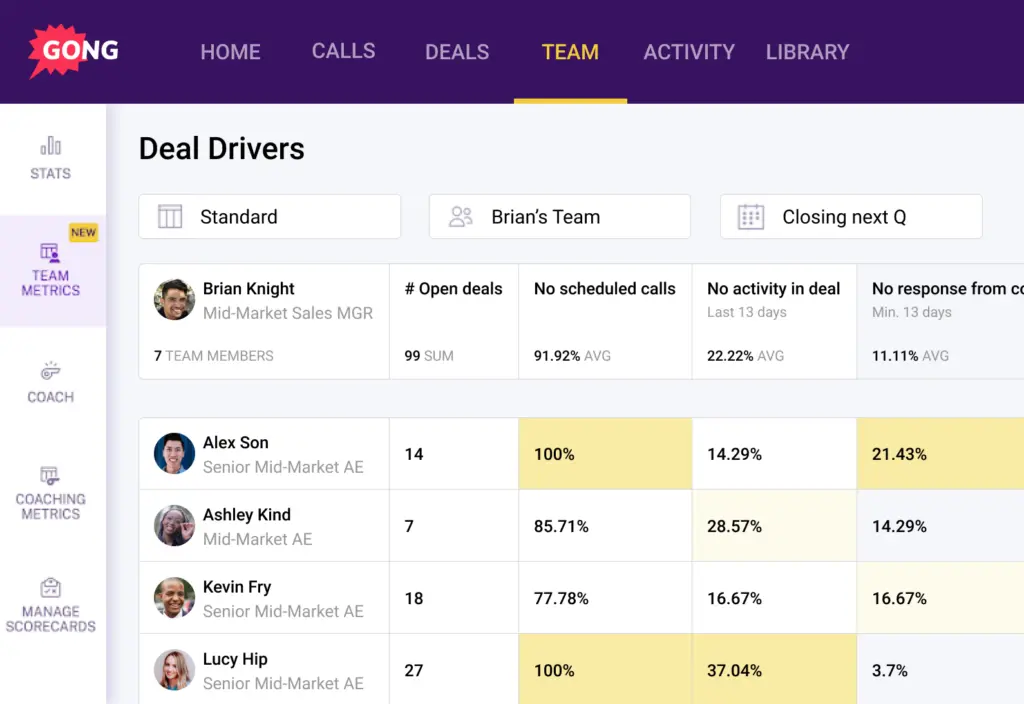
Pipeline and Forecasting Intelligence
Beyond analyzing individual conversations, Gong also positions itself as a tool for forecasting and pipeline visibility. By pulling patterns from across all sales interactions, Gong aims to highlight which deals are healthy, which are at risk, and how likely a team is to hit quota. This shift from conversation intelligence to revenue intelligence is where Gong tries to justify its premium pricing.
For example, Gong might flag a deal as risky if competitor mentions spike in calls, if the champion has gone silent, or if key decision-makers haven’t been engaged. On the flip side, it can bring your attention to leading indicators of momentum, like positive sentiment trends or increased engagement from economic buyers, that suggest a deal is on track.
By tying micro-level conversation data to macro-level pipeline health, Gong gives leadership a more dynamic view of revenue forecasts. The idea is to move beyond static CRM reports into a living model of deal health and probability, helping teams allocate resources more strategically and avoid unpleasant surprises at the end of the quarter.
Why Consider Alternatives to Gong?
While Gong offers a powerful set of tools for sales and revenue intelligence, its pricing can be a significant barrier for smaller businesses or those with limited budgets. Additionally, not every company needs the full range of features that Gong provides. For some, the core functionalities like call recording and transcription are sufficient, making the additional cost of advanced analytics unnecessary.
In these cases, exploring alternatives like tl;dv can be a smart move. tl;dv offers many of the same essential features as Gong but at a fraction of the cost. This makes it an attractive option for businesses that need reliable sales intelligence tools without the financial commitment that Gong requires.
tl;dv: The Best Alternative to Gong
tl;dv is an affordable alternative to Gong, designed for teams that need the essentials without the extras. tl;dv offers high-quality call recording, transcription, and AI-driven insights, making it a strong contender for businesses looking to optimize their sales process without breaking the bank. While it may not have every feature that Gong offers, tl;dv covers the basics that most sales teams need to succeed.
Key Features of tl;dv
Firstly, tl;dv isn’t just a Gong clone. While it’s built with sales teams in mind, tl;dv is a versatile tool that can be used in both client-facing sales calls and internal catch ups, product meetings, and UX research interviews (something where Gong isn’t too clever).
It offers a streamlined, user-friendly experience that’s tailored to the needs of small to medium-sized businesses. With tl;dv, you can record and transcribe sales calls, analyze customer interactions, and gain insights that help improve your sales strategy. The platform’s AI-driven tools provide actionable data, much like Gong, but without the steep learning curve or heavy price tag.
For example, tl;dv’s transcription feature ensures that every word of your sales calls is captured and converted into searchable text. This allows sales teams to quickly review and analyze conversations, identify key moments, and make data-driven decisions. The AI-driven insights provide additional context, helping teams understand customer behavior and refine their approach for future interactions.
tl;dv also offers objection handling, AI coaching, and customizable playbooks that can be adapted to your sales approach (Think MEDDPICC, BANT, SPIN, and more). This offers an incredible level of insight, for a fraction of a cost, and also avoids the ethical and legal issues that come with the sentiment analysis aspect of Gong as well.
tl;dv also automates post-call workflows by automatically filling out specific CRM fields using your meeting notes. Its AI is capable of analyzing multiple meetings at once (100+), helping you spot trends and patterns way in advance of other tools. Similarly, tl;dv (a German-made company) has a big advantage over Gong when it comes to EU-based teams that are required to comply with the EU AI Act.
tl;dv Pricing vs Gong Pricing
One of the biggest advantages of tl;dv is its transparent and affordable pricing structure. Unlike Gong, tl;dv’s pricing is publicly available and easy to understand, with tiered plans that scale based on your needs. For example, small teams might pay just a few hundred dollars per year, making it a highly accessible option for startups and growing businesses.
tl;dv starts off with a freemium model which allows unlimited recording and many other features, going up to $18 per month/per user (paid annually) for Pro, then the sales-focused Business package (which is the closest like-for-like with Gong) is $35 per seat/month/billed annually.

To put that into perspective, if that medium business of 50 users would’ve spent $106,000 in one year on Gong.io, that same team would only need to spend $21,000 using tl;dv.
That’s more than FIVE times cheaper.
For those who need more advanced features, tl;dv offers higher-tier plans that include additional tools and services. However, while you do have to get in touch with tl;dv to discuss these, even these plans are priced significantly lower than Gong, making tl;dv a cost-effective alternative for businesses of all sizes. You can also try before you buy which Gong doesn’t offer.

Why tl;dv Might Be a Better Fit
tl;dv is particularly well-suited for businesses that need a reliable, easy-to-use platform without the financial commitment that Gong requires. For companies with smaller teams, or those that are just starting to explore sales intelligence, tl;dv offers a great balance of functionality and affordability. It’s also a good choice for teams that don’t need extensive market intelligence but still want to improve their sales conversations and customer interactions.
So while Gong offers a comprehensive set of tools for sales and revenue intelligence, its pricing can be prohibitive for some businesses. tl;dv provides a strong alternative, offering many of the same essential features at a fraction of the cost. Whether you’re a startup looking to get off the ground or an established business seeking to optimize your sales process, tl;dv offers a compelling solution that’s worth considering.
Is Gong’s Pricing Right For You?
At the end of the day, Gong offers a powerful suite of sales and revenue intelligence tools, but it comes at a steep and often unpredictable cost. Between per-user fees, mandatory onboarding, platform costs, and potential add-on bundles, the real price tag can easily run into six figures. For large enterprises with deep pockets, the investment might be worth it. For smaller teams, it’s more likely to feel like overkill.
That’s where alternatives like tl;dv stand out. With transparent pricing, no hidden fees, and core features like recording, transcription, AI-driven insights, and even coaching playbooks, tl;dv offers much of what Gong promises, but at a fraction of the cost. For many sales teams, that means getting the intelligence they need without the financial strain (or the negotiation headache).
So the real question isn’t whether Gong is a good tool. It’s whether it’s the right tool for your budget, your team size, and your goals. If you want the Cadillac of revenue intelligence, and you can justify the premium, then Gong delivers. But if you’d rather get 80–90% of the functionality at less than 20% of the price, tl;dv may be the smarter choice.
Ultimately, don’t let Gong’s opaque pricing box you in. Run the numbers, test the alternatives, and decide based on what actually makes sense for your business, not just the hype.
FAQs About Gong's Pricing in 2025
Does Gong publish its pricing online?
No. Gong does not list its pricing publicly. All quotes are customized and require a sales call, which means two companies of similar size may end up paying very different amounts.
How much does Gong cost per user?
The standard per-user fee is often quoted around $1,600 per user per year. With larger teams, discounts can bring that down closer to $1,200–$1,400 per user. Exact pricing depends on negotiation.
What is Gong’s platform fee?
In addition to per-user licenses, Gong charges an annual platform fee. This usually starts at $5,000 per year for smaller teams and can climb to $50,000+ for large enterprises.
Are there onboarding costs with Gong?
Yes. Onboarding is mandatory and typically ranges from $7,500 to $28,500+. This covers implementation, admin training, data mapping, and CRM integration. Larger or more complex setups can exceed $30k.
Can I pay monthly for Gong?
No. Gong contracts are billed annually, and in many cases, customers are pushed toward multi-year agreements.
Does Gong offer different bundles or editions?
Yes. Gong has different license tiers and add-on bundles like Engage or Forecast. Engage in particular is reported to double the per-user cost, and may also drive higher platform and onboarding fees.
Why is Gong’s pricing not transparent?
Gong says its pricing is customized to customer needs, but many buyers see the lack of transparency as a tactic to prevent sticker shock and to maximize negotiation leverage.
How does Gong pricing compare to tl;dv?
For a 100-seat team, Gong can easily run close to $200,000+ in the first year once platform and onboarding fees are included. The same team on tl;dv Business would pay about $42,000, saving over $150k, with transparent pricing and no hidden fees.
